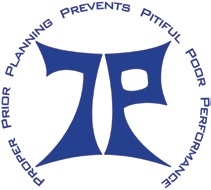
When is a project a success? When it is done? When you are paid? When you have not had call backs? When you were not sued?!
For us, it is when the customer is happy. We have given them something that makes their day-to-day job easier to do, it works, and they have a smile on their faces when they see us. Sounds simple, but it is not.
As a consultant, we have a lot of cards stacked against us, starting with our own work. Did we give them what they wanted—not asked for, but wanted?
Was the project delivered as planned? Just last week, I was in a design-review meeting for a project with a major university. Twenty months ago when we started the project, they told the team they would purchase and install the gear, and we could do an abbreviated design package; clearly they would not be bidding it to themselves. Fast forward to last week—I pulled up to the campus to find not one, but four new projects well out of the ground. It seems that now they will be too busy to do the work themselves, and it will need to be bid out. We need to quickly make some changes to keep the architect happy (after all they are the ones paying us); the project manager happy (in this case, he is the one that will let the school leadership know if the experience was good); the university AV/IT crew happy (they will have to support it); and finally, the end users and their internal support group happy (who have about a 50-percent attrition rate every two years, so they are second guessing the project and wanting to make changes).
So how do we pull a rabbit out of this hat and make everybody in the project happy? First and foremost: communication. In this project, the infrastructure, back boxes, device locations, and cable pathways were all decided on long ago and are installed. Any changes make this a remodel, not new construction. An owner’s construction manager is not usually happy when informed they have to tear out work that has been done and add to it. It does not reflect well on the designers, or the architectural team we work with. For this project, the architect was onsite weekly and was great at documenting what was installed and communicating with the design and construction teams the needs of the building. While the quantity, quality, and location of work are all defined, this is the backstory that cannot be told by the contract documents alone.

So, next up is managing changes and scope creep. This is a tough one when there is a rotating staff on the end user’s team. This is always difficult when a manufacturer such as Apple comes out with something new for the home, or we have to have 4K displays for our Skype calls, or, or, or... The best way, we have found, is to get everybody around the table and see if the change is needed for the actual operating parameters of the business. If so, then it should be done, but if it is a whim based on a Super Bowl or in-flight magazine ad, then you need to play diplomat and explain the pros and cons, including any “black magic” the ad might have included. Eight times out of 10, management will agree that the change is not needed, but for the other 20 percent of the time, you need to find a way to do it all while communicating the impact the change will have, including redesign fees, additional installation fees, changes to the control system flow, and possible extensions to the schedule.
From our point of view, we design our systems and conveyance pathways to grow. Our clients are not putting in a “hang-and-bang” room. They are building facilities that will live and grow with them over the years. So if we have done our work right, there should be a few extra inputs on the mixer or switcher or router. There should be capacity in the conveyance system. The requested change should not have a significant impact to the overall design.
Our last big challenge is the crew we are assigned to get the project installed. We are at the whim of the AV/IT contractor’s project manager. This is scary! Can the AV/IT contractor keep me happy? After all, I am part of their client base. Am I going to be happy when the end user or client’s AV/IT staff says, “Well, the AV/IT contractor’s project manager said your design was stupid, and he would have done it a different way.” Yes, I heard that one again just six weeks ago! Ok, well, times do not change.
So, when is the project a success? When everyone involved from beginning to end is happy. This takes communication, managing expectations, trained staff, and communication. As I learned at scout camp so many years ago, proper prior planning prevents pitiful poor performance. It is all about communication.
Steven Thorburn is the design principal of Thorburn Associates Inc., with offices in San Francisco, Los Angeles, Orlando, Charlotte and Raleigh Durham areas. He is active in leading the design and development of projects around the world.
Keep it Moving
After 20 years, ICIA only has 990 CTS-I installers worldwide, with 226 of those also holding a CTS-D. I am on of those 226, and the last time I was a project manager for an installation was, well, let’s just say a very long time ago. So that is 750-or-so folks who are truly trained to lead an installation team that has gone through the process of meeting my goals.
For one project I am working on, I have an owner who is now asking me when the contractor will be done with its punch list, and all I can say is, “I don’t know. They will not return our calls or emails.” At the same time, on a different project, we received weekly summaries of what was done that week, where they were on the schedule, what they were going to get done next week, and what they needed from others to get that work completed. It’s important that, while we may not like what we see, we should still be aware of what is going on with each project and how to keep it moving.
—S.T.
